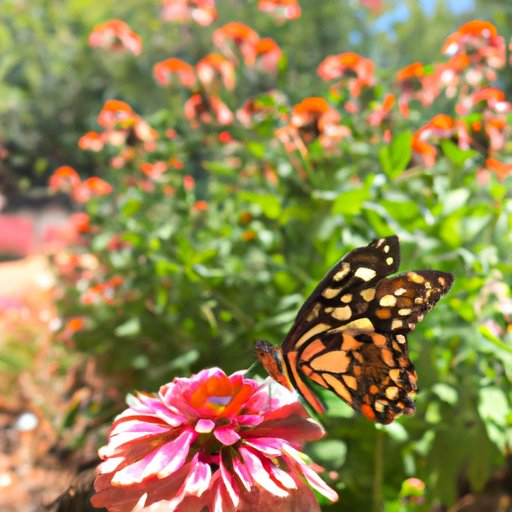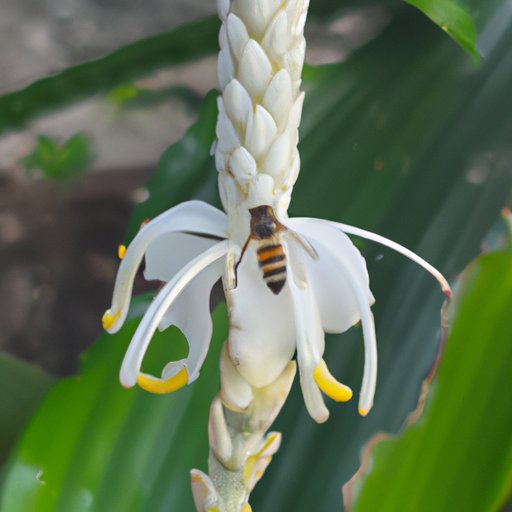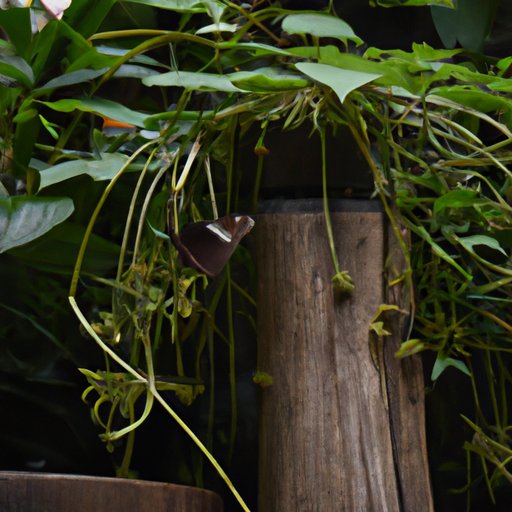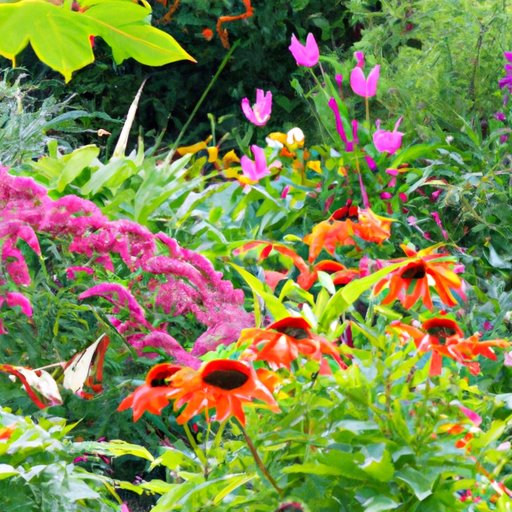Introduction
Butterfly gardening is an enjoyable and rewarding way to enjoy nature and add beauty to any outdoor space. It involves identifying the right type of plants to attract and support butterflies, creating a hospitable environment to keep them coming back, and providing the necessary care and maintenance throughout the year.
Overview of Butterfly Gardening
Butterfly gardening is the practice of creating a garden specifically designed to attract and support butterflies. This type of garden typically includes both nectar and host plants, which provide food and shelter for butterflies. The goal of butterfly gardening is to create an inviting habitat that supports the life cycle of these beautiful creatures.
Benefits of Butterfly Gardening
Butterfly gardening offers a variety of benefits. Not only does it provide a lovely addition to any outdoor space, but it also helps to support local wildlife. By creating a hospitable environment for butterflies, you can help to boost their population in your area. Additionally, butterfly gardens require minimal upkeep, making them a great choice for those who don’t have a lot of time to dedicate to a garden.

Identifying the Best Plants for a Butterfly Garden
When planning a butterfly garden, it’s important to select the right type of plants. There are two main categories of plants that are essential for a successful butterfly garden: nectar plants and host plants.

Types of Nectar and Host Plants
Nectar plants are the primary source of food for butterflies. These plants produce sweet nectar that attracts butterflies from all over. Popular nectar plants include daisies, lantana, lavender, and zinnias. Host plants, on the other hand, provide a place for butterflies to lay their eggs and for caterpillars to feed and develop. Common host plants include milkweed, parsley, and violets.
Tips for Plant Selection
When selecting plants for a butterfly garden, it’s important to consider the climate and soil conditions of your area. Choose plants that are native to your region, as they are more likely to thrive in the local environment. Additionally, selecting plants with different bloom times can provide a steady source of food for butterflies throughout the season.

Creating a Hospitable Environment for Butterflies
In order to create an inviting habitat for butterflies, there are a few key elements to consider. Understanding the sunlight requirements of the plants in your garden is essential, as too much or too little sun can cause them to become stressed and less attractive to butterflies. Additionally, providing shelter and water is important for keeping butterflies around. Placing rocks or logs in sunny areas of the garden can provide a place for butterflies to rest and hide from predators.
Maintaining a Butterfly Garden
Once you’ve established a butterfly garden, it’s important to tend to it regularly. Regular maintenance practices such as pruning, weeding, and fertilizing can help keep the garden healthy and attractive to butterflies. Additionally, it’s important to address any pest problems that may arise. Insecticides and other products should be avoided, as they can be harmful to butterflies.
The Importance of Biodiversity in a Butterfly Garden
It’s essential to have a variety of different species of butterflies in your garden. Different species of butterflies have different preferences when it comes to food, shelter, and other needs. To ensure a diverse population of butterflies, it’s important to plant a variety of nectar and host plants to meet the needs of each species. Additionally, supporting native plant life can help attract local butterflies to your garden.
Attracting Butterflies to the Garden
Once you’ve created a hospitable environment for butterflies, it’s time to start attracting them to your garden. Providing a variety of food sources is one of the best ways to attract butterflies. In addition to nectar plants, adding fruit or sugar-water feeders can provide an additional source of food for butterflies. Additionally, planting colorful flowers can help attract butterflies from far away.
Conclusion
Creating a butterfly garden is a rewarding way to enjoy nature and support local wildlife. By selecting the right type of plants, creating a hospitable environment, and providing a variety of food sources, you can create a beautiful and inviting garden for butterflies. With regular maintenance and attention, your garden will be a haven for these beautiful creatures.
(Note: Is this article not meeting your expectations? Do you have knowledge or insights to share? Unlock new opportunities and expand your reach by joining our authors team. Click Registration to join us and share your expertise with our readers.)
